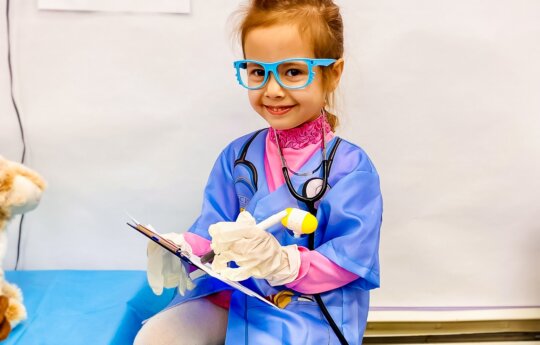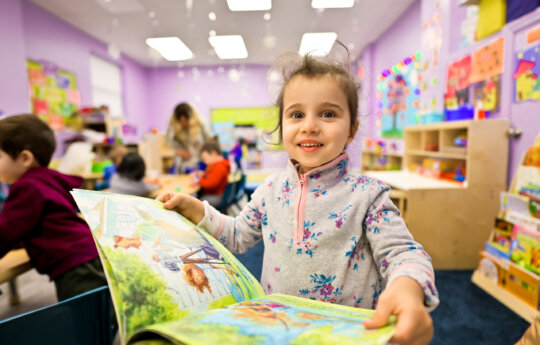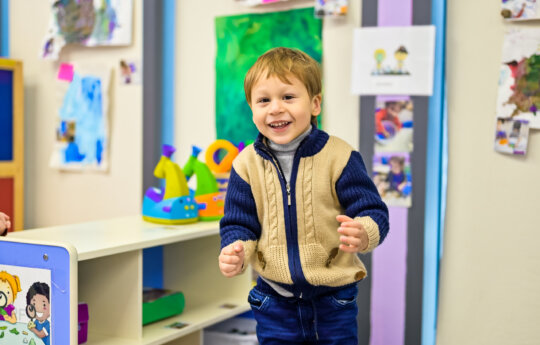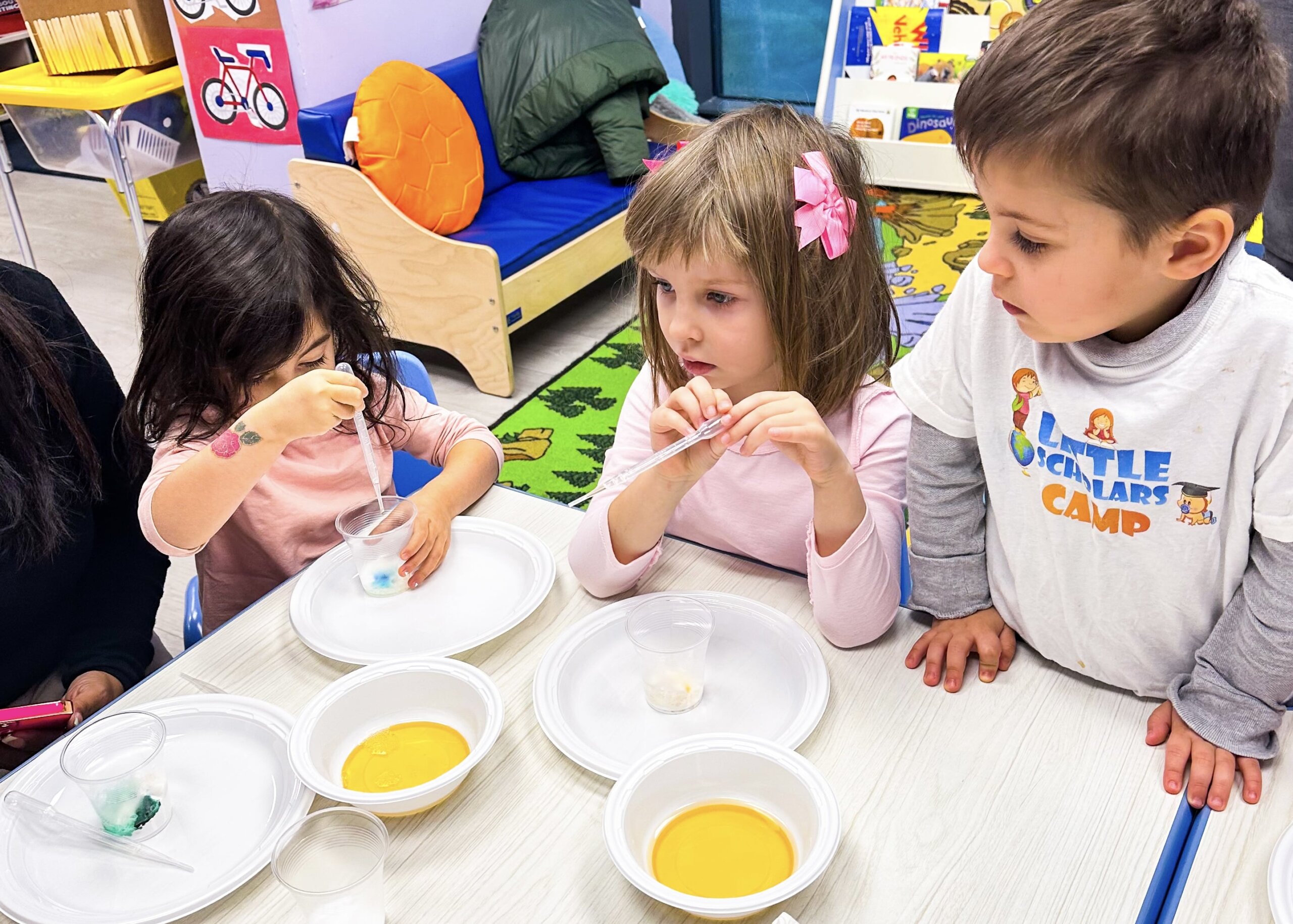
Science education lays the foundation for developing children’s critical thinking and problem-solving skills from a young age. Through DIY science experiments, Little Scholars Daycare offers an exciting avenue for children to explore and learn fundamental scientific principles. These activities not only make learning more engaging but also accessible, allowing children to continue their exploration of science both at daycare and at home. This hands-on approach encourages curiosity, creativity, and a love for learning, fostering a positive attitude towards science that lasts a lifetime.
Discover 30 easy DIY science experiments designed for toddlers and preschoolers to learn and have fun. Dive in now and see how science can be a delightful adventure for your little one!
Why DIY Science Experiments?
Why DIY Science Experiments are a must-try? DIY science experiments are a gateway to unlocking your child’s natural curiosity and enthusiasm for learning. They transform abstract concepts into tangible, memorable experiences, making the wonders of science accessible and relatable. Through these interactive activities, children not only grasp scientific principles but also develop critical thinking and problem-solving skills in a playful, engaging manner. Embracing these experiments at home encourages a collaborative learning environment, where children and parents explore, discover, and learn together, fostering a lifelong love for science and inquiry.
DIY Science Experiments for Different Age Groups
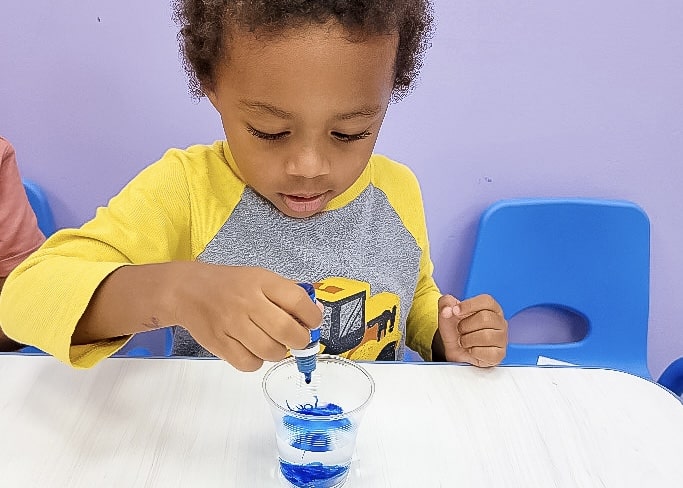
Toddlers Science Fun
Here are 10 simple DIY science experiments suitable for toddlers, designed to spark curiosity and encourage exploration:
1. Color Mixing
Teach toddlers about primary colours (red, yellow, blue) by mixing them in different combinations to create secondary colours (green, orange, purple). This can be done with watercolours, food colouring, or transparent-coloured plastic sheets.
2. Sink or Float
Gather various household objects and a bowl of water. Have toddlers predict whether each item will sink or float before testing their hypotheses, introducing basic principles of density and buoyancy.
3. Magnetic Attraction
Use a variety of objects, including some that are magnetic, to explore magnetic attraction. Show how magnets can attract or repel each other and attract magnetic objects, introducing the concept of magnetic fields.
4. Baking Soda and Vinegar Volcano
Mix baking soda and vinegar in a container to create a simple, erupting volcano. This experiment demonstrates chemical reactions and gas production in an exciting, visual way.
5. Bubble Science
Create a homemade bubble solution with water, dish soap, and glycerin. Experiment with making bubbles using different tools, exploring concepts of surface tension and elasticity.
6. Plant Growth
Plant seeds in a transparent cup filled with soil to observe germination and root development. This introduces toddlers to plant biology and the conditions necessary for growth, such as water, light, and soil.
7. Ice Melting
Place ice cubes in different environments (inside, outside, in water) and observe how they melt at different rates. This experiment helps toddlers understand states of matter (solid, liquid) and the effects of temperature.
8. Shadow Play
Use a flashlight and toys to create shadows on a wall. This activity teaches toddlers about light sources, opaque objects, and how shadows are formed and change size.
9. Balloon Rocket
Attach a balloon to a piece of string and let it go to see it zoom across the room. This demonstrates the principles of propulsion and air pressure in a fun and tangible way.
10. Water Cycle Bag
Draw the water cycle on a sealable plastic bag and add a bit of water. Hang it in a sunny window to observe evaporation, condensation, and precipitation, visually explaining the water cycle.
Each experiment is designed to be safe and engaging, using simple materials to introduce scientific concepts to toddlers in a fun and interactive way.
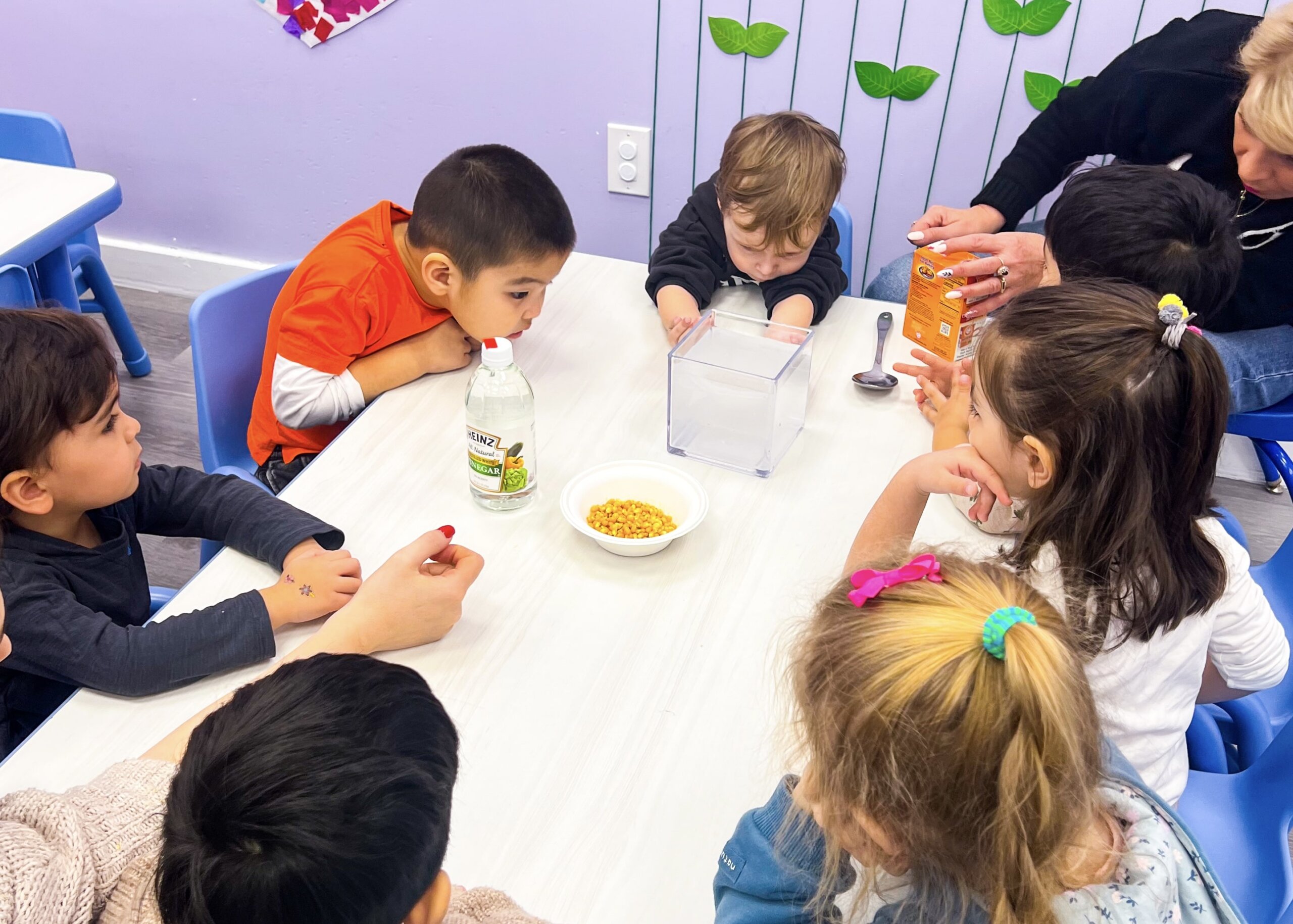
Preschool Scientists
For preschoolers ready to take on slightly more complex experiments, here are some engaging ideas that introduce new scientific concepts while still being fun and manageable:
1. Lemon Volcanoes
A fascinating way for kids to see chemical reactions up close. By adding baking soda to the lemon, children can watch as the mixture fizzes and bubbles, simulating a volcanic eruption. This experiment introduces basic concepts of acid-base reactions in a visually engaging manner.
2. Homemade Lava Lamps
This experiment is a fun way to explore the principles of density and chemical reactions. By combining oil, water, food colouring, and Alka-Seltzer, children can observe how the coloured bubbles move through the oil, creating a lava lamp effect.
3. Crystal Growing
Children can grow their own sparkling crystals using borax, water, and pipe cleaners. This experiment teaches the principles of solutions and crystallization, allowing kids to observe how crystals form over time.
4. Static Electricity Butterflies
Using simple materials like tissue paper and a balloon, this experiment demonstrates how static electricity works. Kids can see firsthand how rubbing the balloon creates static that can make the butterfly wings move.
5. DIY Rain Gauge
An excellent way for children to learn about weather and measurements. By creating their own rain gauge, they can track rainfall over time and understand how weather is measured.
6. Water Xylophone
This musical experiment teaches kids about sound waves and vibration. By filling glasses with varying amounts of water and tapping them, children can explore how the pitch changes with the water level.
7. Walking Water
A visually striking experiment that demonstrates capillary action and color mixing. Children can watch as coloured water “walks” across paper towels, blending colours and showing how water can move through materials.
8. Simple Circuit
Introduces basic electrical concepts by creating a circuit with a battery, wire, and light bulb. This hands-on activity helps children understand how electricity flows and lights up a bulb.
9. Solar Oven
Using everyday materials, children can build a simple solar oven. This experiment teaches about solar energy and the greenhouse effect, showing how the sun’s energy can be harnessed to heat and cook.
10. Glow-in-the-Dark Slime
By adding glow-in-the-dark paint to slime, children can explore the properties of materials and light. This experiment is not only fun but also illuminates the science behind phosphorescence and chemical reactions.
These experiments provide a fantastic opportunity for preschoolers to delve deeper into science with projects that are a bit more challenging but still loads of fun and highly educational.
Safety First
Ensuring safety is paramount when engaging in DIY science experiments, especially with young learners. Adult supervision is crucial to oversee all activities, ensuring that experiments are conducted safely and appropriately. It’s essential to follow general safety guidelines.
General safety guidelines for DIY science experiments at home
- Wear Protective Gear: Use safety goggles, gloves, and aprons as needed to protect from spills or splashes.
- Read Instructions First: Always understand the experiment’s steps and safety warnings before starting.
- Keep a Clean Workspace: Ensure the area is tidy and free from unnecessary items to prevent accidents.
- Use Materials Properly: Follow guidelines for each substance used; do not mix chemicals unless instructed.
- Supervise Children: Adults should always be present to oversee the experiment and assist when needed.
- Dispose of Materials Safely: Follow proper disposal methods for any chemicals or experiment leftovers.
- First Aid Kit: Keep a first aid kit nearby in case of minor injuries or spills.
- Know Emergency Procedures: Be familiar with how to handle emergencies, such as chemical spills or burns.
These practices help create a safe learning environment, allowing children to explore and discover without risk, fostering a positive and educational experience in science exploration at home.
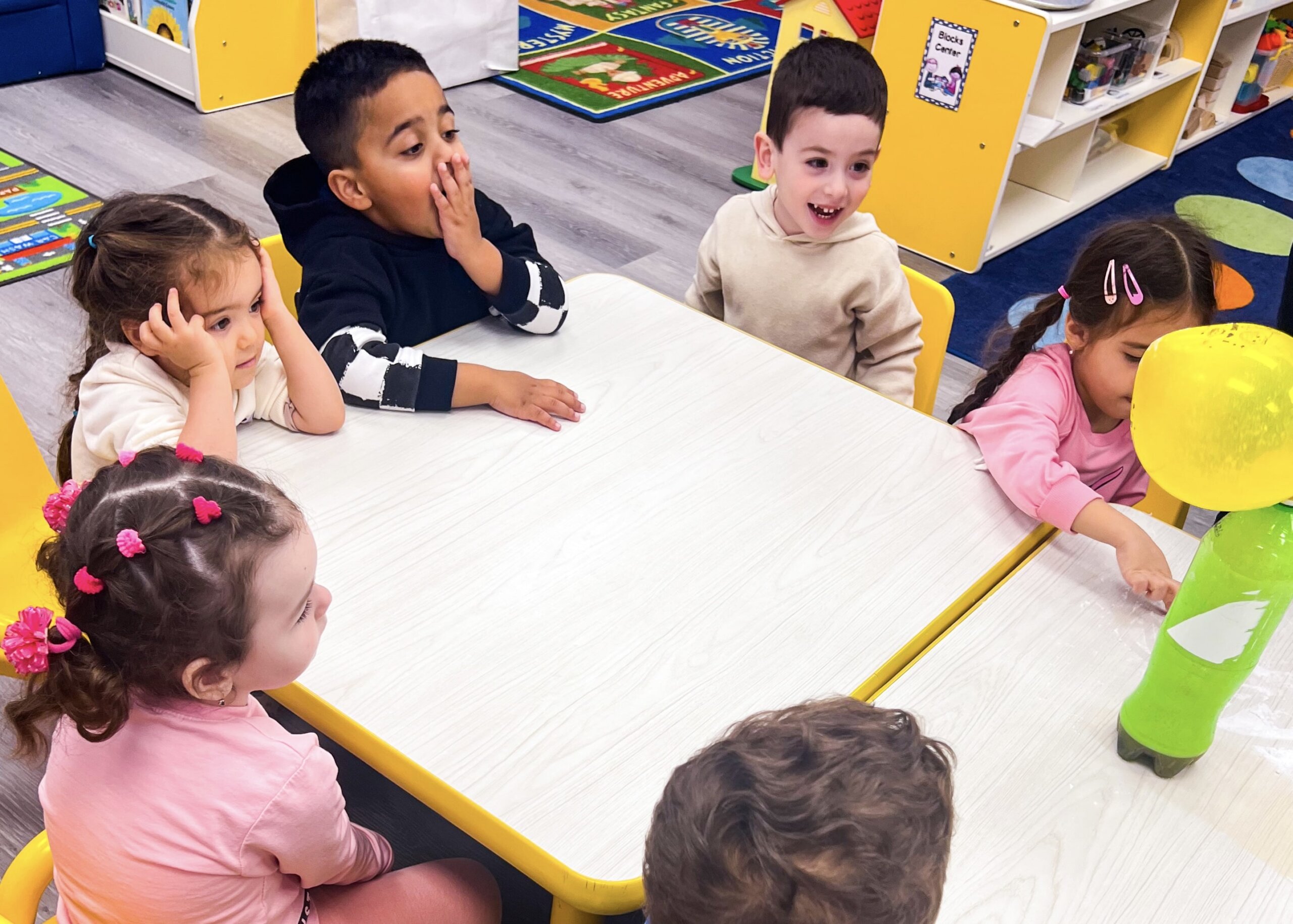
DIY Experiment List
Here’s a curated list of DIY science experiments, categorized by difficulty level and the science concepts they demonstrate. Each experiment is tailored for children up to 5 years old, with a brief description, materials needed, and the educational takeaway.
Easy Level: Introduction to Basic Concepts
1. Cloud in a Jar
- Objective: To demonstrate how clouds form through condensation.
- Materials: Glass jar, hot water, ice, hairspray.
- Procedure:
- Pour hot water into the jar, filling it about one-third of the way.
- Quickly spray a small amount of hairspray into the jar.
- Place the lid upside down on top of the jar and immediately put several ice cubes on the lid.
- Watch as a cloud begins to form inside the jar. After a few minutes, lift the lid slightly to let the cloud escape.
- Educational Takeaway: Kids learn about condensation and the role temperature and particles play in cloud formation.
2. Dancing Raisins
- Objective: To observe buoyancy and gas bubble formation.
- Materials: Clear glass, carbonated water, raisins.
- Procedure:
- Fill the glass with carbonated water.
- Drop a few raisins into the water.
- Observe as the raisins begin to move up and down in the glass.
- Educational Takeaway: Demonstrates how gas bubbles can attach to objects, making them buoyant enough to move in a fluid.
3. Static Magic
- Objective: To explore static electricity and its effects.
- Materials: Balloons, small paper pieces or pepper.
- Procedure:
- Inflate the balloon and tie it off.
- Rub the balloon against your hair or a woolen fabric for a few seconds.
- Hold the balloon close to the small paper pieces or pepper without touching them.
- Watch as the static charge built up on the balloon attracts the paper or pepper.
- Educational Takeaway: Introduces the concept of static electricity and how it can attract objects.
4. Colorful Milk Art
- Objective: To illustrate chemical reactions and fluid dynamics.
- Materials: Whole milk (for better results), food coloring, dish soap, cotton swabs.
- Procedure:
- Pour milk into a shallow dish to just cover the bottom.
- Add a few drops of different colored food coloring to the milk.
- Dip a cotton swab into dish soap and then lightly touch the center of the milk dish with the soapy swab.
- Observe the burst of color as the soap disperses through the milk.
- Educational Takeaway: Kids see how soap molecules interact with fat in the milk, causing movement and color mixing.
5. Air Pressure Bag
- Objective: To demonstrate the principles of air pressure.
- Materials: Ziplock bag, straws, tape.
- Procedure:
- Make small holes along one side of the ziplock bag and insert straws into each hole, sealing them with tape to ensure air can’t escape around the straws.
- Close the ziplock bag, leaving one straw sticking out to blow into.
- Blow into the straw to inflate the bag and demonstrate how air pressure can fill a space.
- Educational Takeaway: Children learn about air pressure and its capacity to inflate objects, illustrating the concept in a tangible way.
Intermediate Level: Building on Basics
1. DIY Sundial
- Objective: To understand how the position of the sun affects shadows and to introduce the concept of solar time.
- Materials: Plate, playdough, straw, marker.
- Procedure:
- Place a lump of playdough in the center of the plate.
- Stick a straw vertically into the playdough—this acts as the gnomon of the sundial.
- On a sunny day, place the plate outside where it will receive unobstructed sunlight.
- Use the marker to mark the shadow’s position at the start of the hour, and label it with the time.
- Check back every hour to mark and label the shadow’s position. Observe how the shadow moves around the plate.
- Educational Takeaway: This experiment teaches children about the Earth’s rotation, how it affects the position of shadows, and the concept of telling time using the sun.
2. Ice Fishing
- Objective: To demonstrate how salt affects the freezing point of water.
- Materials: Ice cubes, string, salt, water.
- Procedure:
- Place an ice cube in a glass of water.
- Lay the string across the ice cube and sprinkle salt on the ice cube where the string lies.
- Wait about a minute for the ice to partially melt and then refreeze around the string.
- Gently pull the string to lift the ice cube out of the water.
- Educational Takeaway: Kids learn about freezing point depression, demonstrating how adding salt changes the physical properties of ice and water.
3. Sound Sandwich
- Objective: To explore how vibration creates sound.
- Materials: Two craft sticks, two rubber bands, a small piece of straw, and a strip of paper.
- Procedure:
- Wrap a rubber band lengthwise around one craft stick.
- Place the strip of paper over the craft stick, covering the rubber band.
- Put the small piece of straw under the rubber band at one end of the stick.
- Place the second craft stick on top and secure both ends with the second rubber band, creating a “sandwich”.
- Blow into the space where the straw creates an opening and listen to the sound produced.
- Educational Takeaway: This experiment shows how sound is produced through vibrations and how altering the dimensions of the vibrating body changes the sound.
4. Magic Milk Explosion
- Objective: To demonstrate the reaction of dish soap with fat molecules in milk.
- Materials: Whole milk, food coloring, dish soap, cotton swabs.
- Procedure:
- Pour milk into a shallow dish to cover the bottom.
- Add several drops of different colored food coloring to the milk but do not mix.
- Dip a cotton swab in dish soap, then gently touch the surface of the milk with the soapy swab.
- Watch as the colors explosively spread out across the milk’s surface.
- Educational Takeaway: Kids learn about the chemical properties of soap and fat and how they interact to create movement and color patterns in the milk.
5. Egg Drop Parachute
- Objective: To understand the principles of gravity and air resistance by safely landing an egg.
- Materials: Eggs, plastic bags, strings, tape.
- Procedure:
- Cut the plastic bag into a large square to act as the parachute canopy.
- Attach strings at each corner of the square and tie them together at the other ends.
- Secure the egg by making a small tape harness or using a small bag tied to the center of the string.
- Find a safe height to drop the parachute and observe how the plastic bag slows down the fall, allowing the egg to land safely.
- Educational Takeaway: Demonstrates how air resistance (drag) works against gravity to slow down the fall of an object, introducing basic principles of physics in a tangible way.
How to engage kids throughout the experiment process:
Making science fun is about sparking curiosity and encouraging exploration. Engage kids by turning experiments into storytelling adventures, where each step is part of a grand exploration. Incorporate the scientific method by asking children to predict outcomes (hypothesis), observe what happens (observation), and discuss why it happened (conclusion). Use real-world connections to make concepts relatable and celebrate every discovery, fostering a love for learning and inquiry.
Resources on Experiments for Kids
For kids who are eager to dive deeper into the world of science, the internet and bookstores are treasure troves of knowledge. Websites like the National Geographic Kids, Science Kids, and the NASA Kids’ Club offer a wealth of interactive games, experiments, and educational articles.
Books such as “The Everything Kids’ Science Experiments Book” by Tom Robinson and “National Geographic Little Kids First Big Book of Why” by Amy Shields provide engaging explanations and activities. These resources can significantly enrich a child’s understanding and enjoyment of science.
Conclusion
As we conclude our journey through the TOP 30 Easy DIY Science Experiments for Kids, it’s important to recognise the power of integrating science into everyday activities at home. Parents and educators alike have a fantastic opportunity to nurture a child’s curiosity and critical thinking skills through these fun, educational experiments. Each experiment, carefully selected and designed for young learners, provides a unique opportunity to explore the wonders of science in an engaging and hands-on manner.
Let’s make science a regular part of children’s lives, celebrating each discovery and encouraging a lifelong passion for learning. Explore Little Scholars Daycare Programs to inspire further and cultivate your little one’s love for science, paving the way for a future where they continue to question, explore, and discover.

